Is there such a thing as a perfect meal? There might be at Kibako.
Perfection is impossible to achieve. If, however, you were foolish enough to go looking for it, a good place to start might be Japan. Take wabi sabi ceramics, or chefs that quietly dedicate entire lives to sushi, there’s a thread of Japanese culture that grapples with the chase to make something as good as it can be.
This seems something that sushi Chef Padam Raj Rai (a Nepalese no less) totally gets. He was trained in Osaka so no doubt picked much of this up at the source. Either way, it shows right through his latest venture, Kibako.
You might have tried some of his food at his curry house, The Gurkhas, or Rai – his ex-flagship restaurant on Windmill Street in the space Kibako now occupies. It had a reputation for very high-quality sushi. That lives on in this new venture, though served at Kibako with a more affordable price tag.
We thought we ought to see what it’s all about.
Kibako – The Full Review
The Food
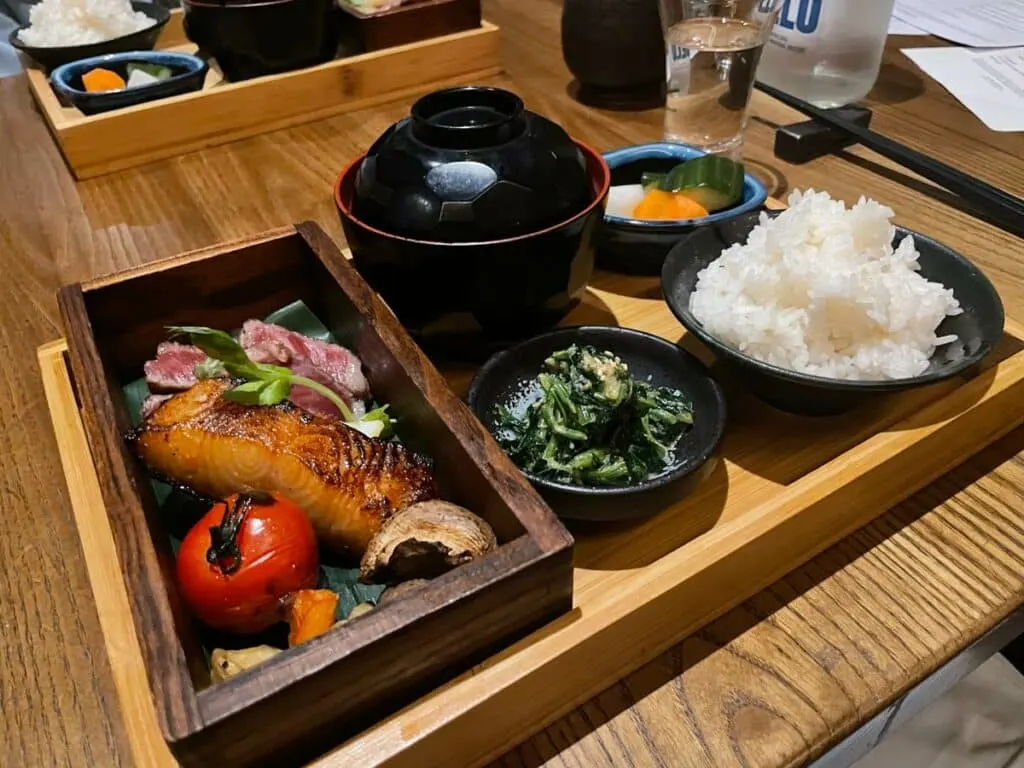
You could pick your way through appetiser plates at kibako but if you want to know what this restaurant is really about you should go for one of the set menus. Thar lands you a selection of sushi, a kibako (more on that later), a wagyu/cod rice set and dessert – with drink pairings of course.
Ours began with a flurry of dishes, each introduced, then devoured in about two bites only to be replaced with something else just as delicious.
An oyster played opener, sat in a light vinaigrette and followed by scallop sashimi that was a bed for two razor thin slices of plum. Then came the heavier fish: seared fatty tuna in a red jalapeno sauce, which made it clear – by about 10 minutes in – we were in for a pretty exceptional meal.
Kibako gets its name from a sushi-serving box. A kibako has 9 or 12 compartments, each with a separate bit of sushi or sashimi in it. This was explained by our waitress, who also showed us the correct order to eat these dishes in while grating fresh wasabi straight from the root and recommending a soy sauce that had been three-years aged.
We won’t go into too much detail here because each box will be tailored to your tastes based around what you ordered to start. We will say that the attention to order and detail in everything from the texture of the sashimi to dusting of lime salt on a palate-cleansing slice of lightly fried courgette was nothing short of impressive.
It really feels like Chef Rai has considered how everything, right down to the tiny leaves that might garnish your egg roll has been the result of a decision thought over, then carefully thought over again.
Parmesan shavings over a box of tempura-flaked eel rolls – our favourite bite of the meal – preceded the main course: another box, this time filled with wagyu steak slices, grilled vegetables and a black-miso cod that we believe (and don’t shoot the messenger) is actually better than the iconic black miso cod at Nobu – see for yourself.
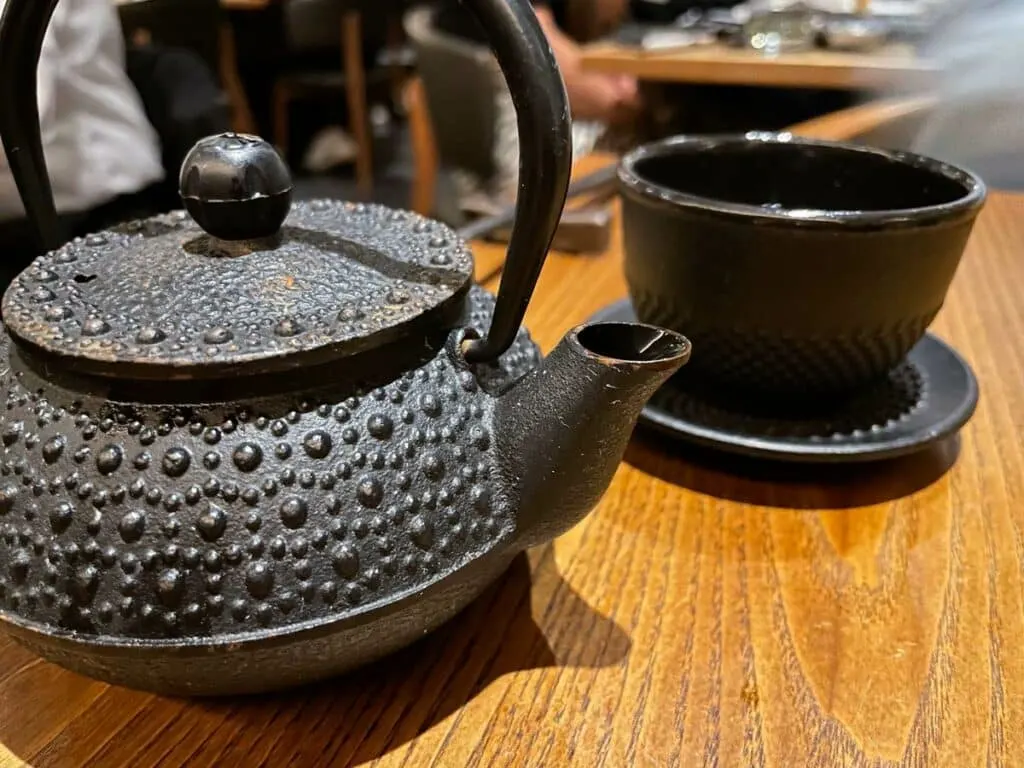
This comes with a miso soup and bowl of rice, as well as a small bowl of tsukemono (Japanese pickles). Rice is a big deal at high-end sushi joints but here it wasn’t as exciting as we’d expected, which is the only criticism we’d reserve for kibako and a very minor one at that.
The finest meal we’d eaten in a very long time was finished with a light yuzu posset – just a touch of something sharp and sweet to close the book. We wouldn’t have needed much more.
Standing up to leave we didn’t have to groan from overeating. There was no after-dinner discomfort. We were just an ideal amount of full. Did the chef consider this too? What do you think?
The Drink
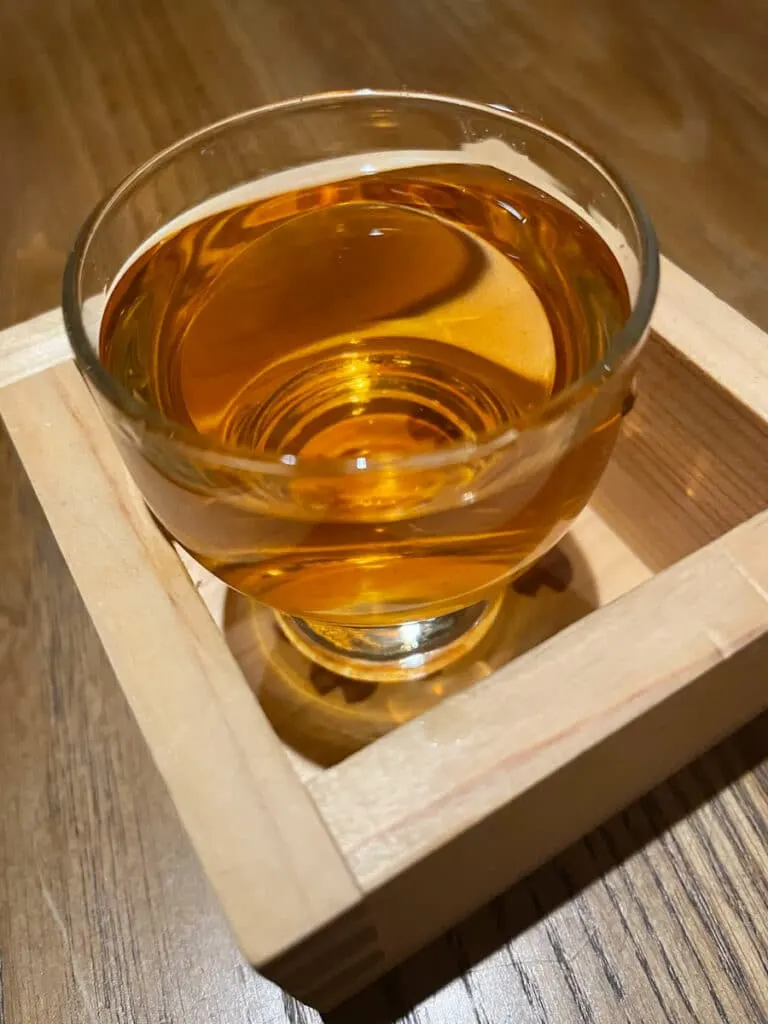
We had a drink pairing to match each of the main courses. It started off with a cocktail – an Obi Wan (the name plays off the Ki No Bi gin that makes the cocktails base) – that gin is mixed with matcha and lemon juice and served in a gorgeous iron tea pot.
A glass of white came with the kibako but the show stealer was a house sake mixed with wild honey that accompanied the boxed course of wagyu and blackened cod. Even if you don’t like sake’s somewhat alkaline flavour, you should give a glass of this a try.
Finally dessert was paired with a plum wine – a drink that initially tasted as sweet as the pudding you’re eating but finishes off with a nice sharp note that makes the next bite of yuzu posset even more irresistible.
The Look
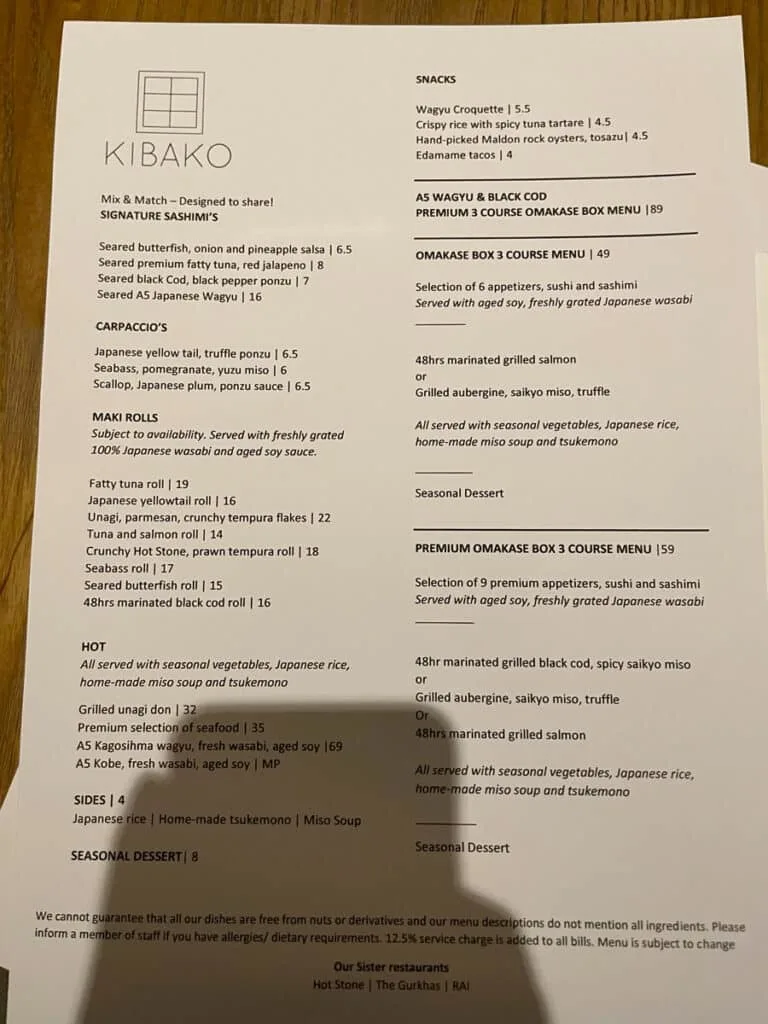
Kibako looks exceptional. The semi-basement space has no windows and as such is gloomy and dark. The hosts have lit the place dimly enough that your corner of the room feels personal and separate from the next table over, and somehow bright enough that you can see the work that’s been done to bring the space to life.
That being the introduction of some very simple woodwork, sleek and minimalist in style. Touches of gold dash the walls where cracks, instead of being plastered, have been fixed with kintsugi – a technique of using gold adhesive to emphasise the beauty of damaged objects.
It’s that same eye for detail that you see in the dishes, that goes into the decor. Even the ceramics you’re served food in are like little works of art.
Looking around during a lull between courses we agreed the entire restaurant seems to be in harmony with what’s going on at the table.
Final Thoughts
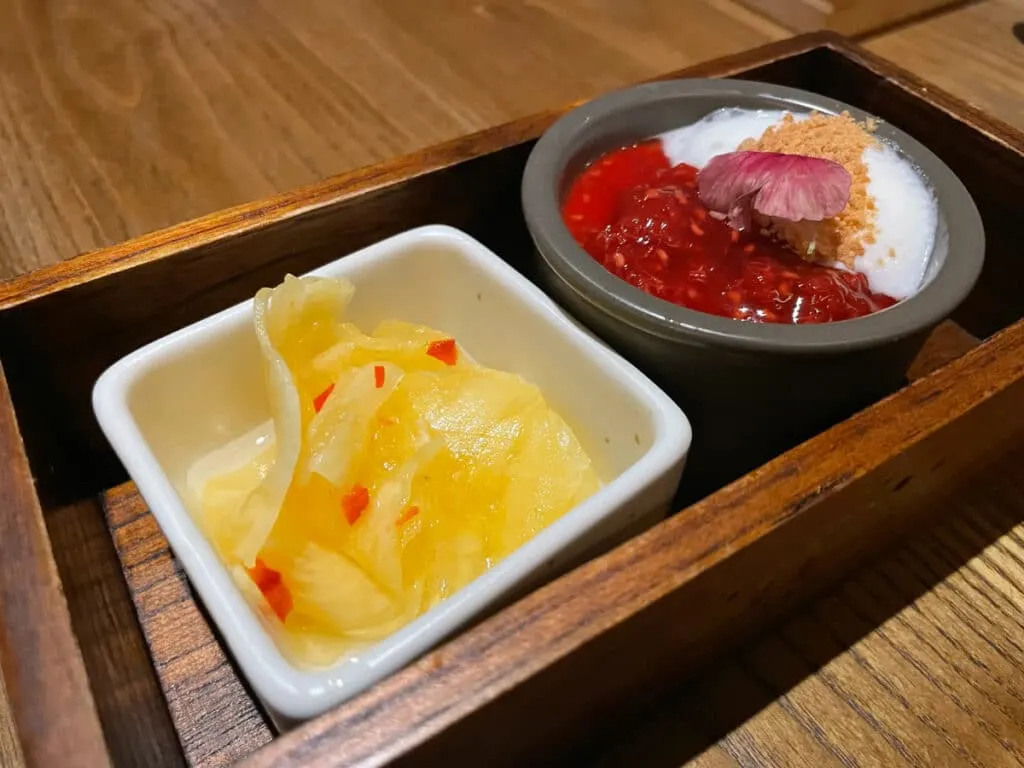
The kind of attention to detail that has Kibako touched up with kintsugi rather than plain fixed, or plates sushi in artful ceramics runs right through all of the food and service at kibako. Where there’s an opportunity to make something as good as it can be, that opportunity has been taken.
The result is, dare we say it, perfect.

